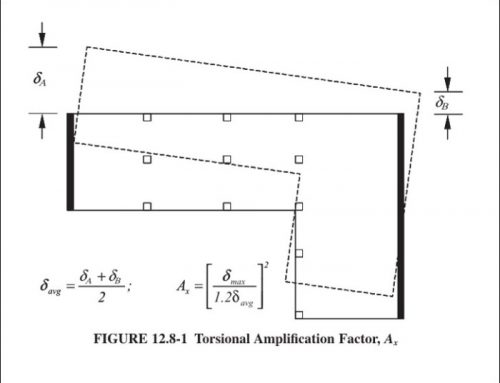Question:
I noticed that with the updates of codes it seems that with the passage of time the seismic parameters (response spectral accelerations) are increasing. For example if we compare earlier versions of AASHTO (if we talk about bridges) and the 2013 version, the earthquake changed from 475 years to 1000 years return period earthquake, while the R factor and load factor for earthquake remained same. Wasn’t this change in early 2000’s a drastic? The earlier structures (bridges for Aashto) required retrofit? Should have been a huge retrofitting activity!
For Pakistan we have only PGAs for 475 years in PBC. Practicing engineers get stuck when searching for Ss and S1 and MCE level parameters. I tried looking for PSHA maps for your study that you mentioned in your lectures on your web page. But I think it’s not there. At least it can be a good cross check while using IBC or ASCE with what ever accelerations one come up with while using modern codes in Pakistan.
Answer:
The spectral accelerations (at different probability of exceedances or return periods) are a result of detailed probabilistic seismic hazard assessment. As our understanding of the earthquake phenomena increase, the updates hazard assessments are performed and more accurate numbers are crunched. As such there is no physical evidence that the earthquake phenomenon itself, its rate or its frequency is increasing over time. In fact, it is our understanding which is increasing and therefore, the definition of design level earthquake keeps on changing with new standards and codes. For example in buildings as you have mentioned, there was a time when we were using PGA with 10% probability of exceedance in 50 years (475 years return period) as a primary measure of seismic hazard for design, then from 2000 onwards we moved to 2/3 of MCE (where MCE was defined as an event with 2% probability of exceedance in 50 years, corresponding to 2475 years return period), then from 2010 onwards we moved to 2/3 of risk-targetted MCE level (where risk-targetted MCE is defined as an event for which the probability of collapse of the structure is 1%). So with more understanding the design parameters are also getting improved.
For bridges, I am not very familiar with AASHTO guidelines. As you said, it might also changed its definition for design-level earthquake. About the safety of structures designed according to older codes, this is a huge topic itself. All I can say in brief is that generally the code provisions, if followed properly, result in a sufficiently conservative design which in many cases, is still Ok with changes in those provisions. So mostly, for regular, ordinary and symetric structures, there might not be any need of performance evaluation and retrofit according to new codes. However, there can be certain cases where the understanding of seismic hazard significantly changed and there was a need to evaluate the safety of existing structures also. One such example is the high-rise buildings in the city of Bangkok, the capital of Thailand. Prior to 2000s, it was assumed that the city is not at all at risk from earthquakes. So most of the high-rise buildings in Bangkok were constructed without any consideration of seismic loads. Later, it was found out that the city is at risk from distant large-magnitude events from Sumatra subduction zone and other seismic sources. So there was an urgent need for performance evaluation of some important building structures against anticipated ground motions. However, generally speaking, if a building is designed and detailed according to UBC 97 zone 3 or 4 already, it might not be necessary to carryout its performance evaluation according to IBC 2000 or any later version. But if the building is not designed at all for seismic actions, it must be evaluated and retrofitted.
For Pakistan, there are several sources from which the Ss and S1 values at MCE level can be obtained. However none of those sources have an official status and they should be used with great skepticism. These sources include IBC 2003 table for international cities, individual research papers on seismic hazard of Pakistan, and reports from various national and international organizations about the seismic hazard of Pakistan and surrounding regions (e.g. GSHAP, PMD and NORSAR, GEM EMME etc.). We at NUST, have also conducted a detailed hazard assessment of Pakistan and produced Ss and S1 maps for different return periods. We are currently developing an web-based online system for dissemination of these maps with values to public. They are also currently in peer-review process. If got published, they can be used with more confidence. There is a recent initiative by PEC (with support from World Bank) to improve the 2007 building code of Pakistan. I hope that the new code will offer a radically improved and up-to-date seismic design philosophy and will also include Ss and S1 maps for different return periods.
Regards
Fawad





Leave A Comment